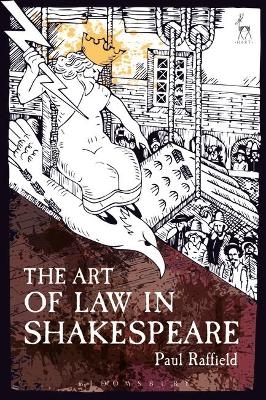
The Art of Law in Shakespeare
Hart Publishing (Verlag)
978-1-5099-3007-4 (ISBN)
Common law and Shakespearean drama of this period employed various aesthetic devices to capture the imagination and the emotional attachment of their respective audiences. Common law of the Jacobean era, as spoken in the law courts, learnt at the Inns of Court and recorded in the law reports, used imagery that would have been familiar to audiences of Shakespeare's plays. In its juridical form, English law was intrinsically dramatic, its adversarial mode of expression being founded on an agonistic model. Conversely, Shakespeare borrowed from the common law some of its most critical themes: justice, legitimacy, sovereignty, community, fairness, and (above all else) humanity.
Each chapter investigates a particular aspect of the common law, seen through the lens of a specific play by Shakespeare. Topics include the unprecedented significance of rhetorical skills to the practice and learning of common law (Love’s Labour’s Lost); the early modern treason trial as exemplar of the theatre of law (Macbeth); the art of law as the legitimate distillation of the law of nature (The Winter’s Tale); the efforts of common lawyers to create an image of nationhood from both classical and Judeo-Christian mythography (Cymbeline); and the theatrical device of the island as microcosm of the Jacobean state and the project of imperial expansion (The Tempest).
Paul Raffield is Professor of Law at The University of Warwick, where he teaches Shakespeare and the Law, Origins of English Law, and Tort Law. He is the author of Shakespeare’s Imaginary Constitution: Late Elizabethan Politics and the Theatre of Law (Oxford, Hart Publishing, 2010) and Images and Cultures of Law in Early Modern England: Justice and Political Power, 1558-1660 (Cambridge, Cambridge University Press, 2004). He is co-founder and consultant editor of the journal Law and Humanities.
Introduction
1. ‘Fie, painted rhetoric!’ Common Law, Satire and the Language of the Beast
I. Oratory, Empire and Common Law
II. Rhetoric, Method and the English Lawyer
III. Our English Martiall: John Davies of the Middle Temple
IV. Love’s Labour’s Lost, the Inns of Court and the Sweet Smoke of Rhetoric
2. Princes Set Upon Stages: Macbeth, Treason and the Theatre of Law
I. Compassing or Imagining Regicide
II. Of Such Horror, and Monstrous Nature: The Juridical Enactment of Betrayal
III. Royal Succession as Theatre of the Whole World
IV. Treason and the King’s Two Bodies
3. The Winter’s Tale: An Art Lawful as Eating
I. Law, Literature and Genealogy
II. Horticulture, Transformation and the Artifice of Law
III. The Nature of Law
IV. Inheritance, Gender and the Common Law Tradition
V. The Arts of Portraiture and Politics
4. Cymbeline: Empire, Nationhood and the Jacobean Aeneid
I. Some Footsteps in the Law
II. A Law Inscribed upon the Heart
III. Postnati. Calvin’s Case and the Journey of Jacobean Law
IV. The Divine Purpose, Nature and the Equivocal Image
V. The Nationalist Ends of Myth
5. The Tempest: The Island of Law in Jacobean England
I. Cannibals, Colonies and the Brave New World
II. Utopia and the Legal Imagination
III. Enchanted Islands of Common Law
| Erscheinungsdatum | 23.11.2018 |
|---|---|
| Verlagsort | Oxford |
| Sprache | englisch |
| Maße | 156 x 234 mm |
| Gewicht | 440 g |
| Themenwelt | Geschichte ► Teilgebiete der Geschichte ► Militärgeschichte |
| Geisteswissenschaften ► Sprach- / Literaturwissenschaft ► Anglistik / Amerikanistik | |
| Geisteswissenschaften ► Sprach- / Literaturwissenschaft ► Literaturgeschichte | |
| Geisteswissenschaften ► Sprach- / Literaturwissenschaft ► Literaturwissenschaft | |
| Recht / Steuern ► Rechtsgeschichte | |
| ISBN-10 | 1-5099-3007-8 / 1509930078 |
| ISBN-13 | 978-1-5099-3007-4 / 9781509930074 |
| Zustand | Neuware |
| Haben Sie eine Frage zum Produkt? |
aus dem Bereich


